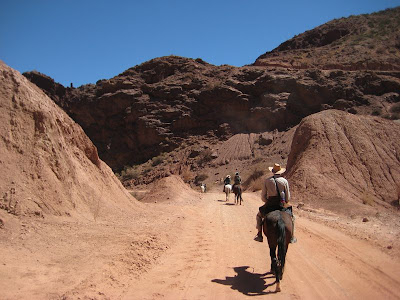First of all, as in any other part of the world, vast majority of problems are to a large extent very local. Problems are usually connected to specific parts of larger cities (and usually at night) or - much less frequently - to troubled regions with long-term political disputes. Talking about safety of a continent thus makes no sense. When there is shooting in Guayaquil, Ecuador or a deadly disease in the valleys of Colombia, it does not mean that there are shootings all over Ecuador and everybody in Colombia is dying. Natural logic, however not that many people seem to follow.
Second of all, many problems are extremely publicized. People in the West do not want to hear that there was a successful cow breed in the mountains of Bolivia this year or a feastful parade in Cuzco, Peru. People prefer to read that 50 people died of earthquake in coastal Chile or that there had been unrest connected with elections in Venezuela. Again, very natural, however when people continue to read only such news (and there is a large lack of other types of news in Western mainstream media) they soon - sometimes inconsciously - come to the conclusion that "just bad stuff is happening there". It is not that "there is just bad stuff happening there" - it is too much writing about catchy (and often unimportant and/or highly political) topics and lack of publicity of the "good stuff" that causes incredible damage to public image of many developing countries.
Bearing in mind local nature of many problems and their ridiculous publicity, here are few tips for safer travel anywhere. After all, travelling safe in Latin America is about decreasing the (already low) probability of problems as travelling anywhere else.
- Do not get paranoid and use common sense. This is not Hollywood movie. The probability of you being mugged by a bloodthirsty bandit is the same as you being consequently rescued by Chuck Norris or Steven Saegal.
- Observe, do like the locals do and follow their advice. Different country means different rules. If you are walking at night in a neighborhood and do not meet anybody what so ever, there is probably a reason why people don't go there. Also, when you are the only one not wearing your backpack on your chest, do not be surprised if you find it empty. You name it. It makes lives of everybody much easier if foreigners stick to what local people consider "normal".
- Minimize your "visual net worth" and watch your stuff. If you walk around with a $500+ camera or dressed in latest fashion, you have probably moved couple of dozens places up in local competition for being mugged.
- Know the current situation, not the rumors or history. Large majority of developing countries dealt with their most painful issues until the 1990's. That means that for 10-20 years, those countries are battling common social and economic problems, rather than shooting rebels in their cities.
- Be constructively critical to the bad stories you hear from other people. As it happens with all rumors, they get bigger and more serious while passing from one person to another. Furthermore, majority of those "victims" broke at least one of the rules mentioned here. Plus, how many people will say "I made a mistake, I was dumb" and how many will rather come up with outrageous stories about what happened to them?
May the Maya be with you! :)
Tranquillo. Stay alert, but take it easy.
Embrace this wonderful region to the fullest.




























































